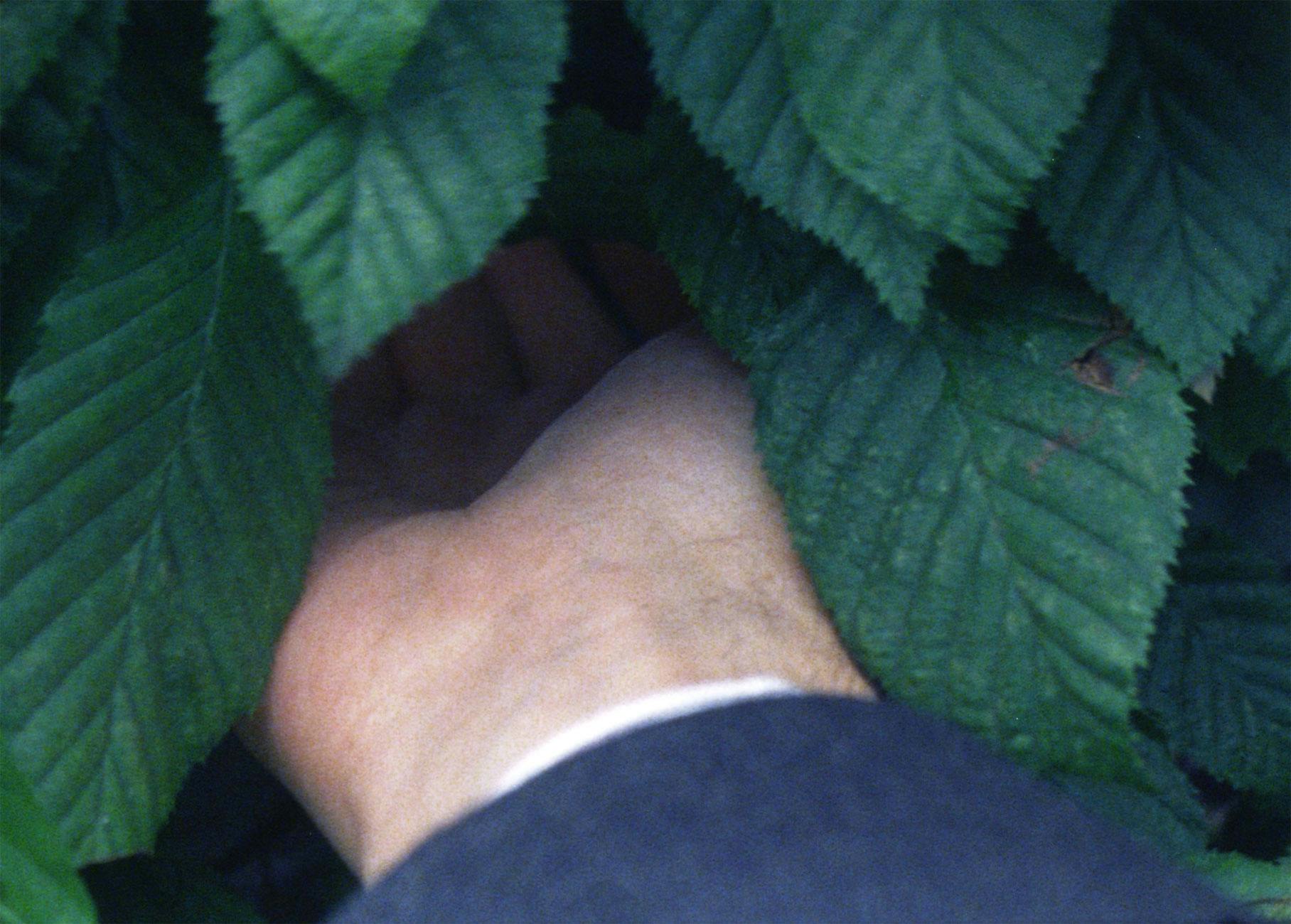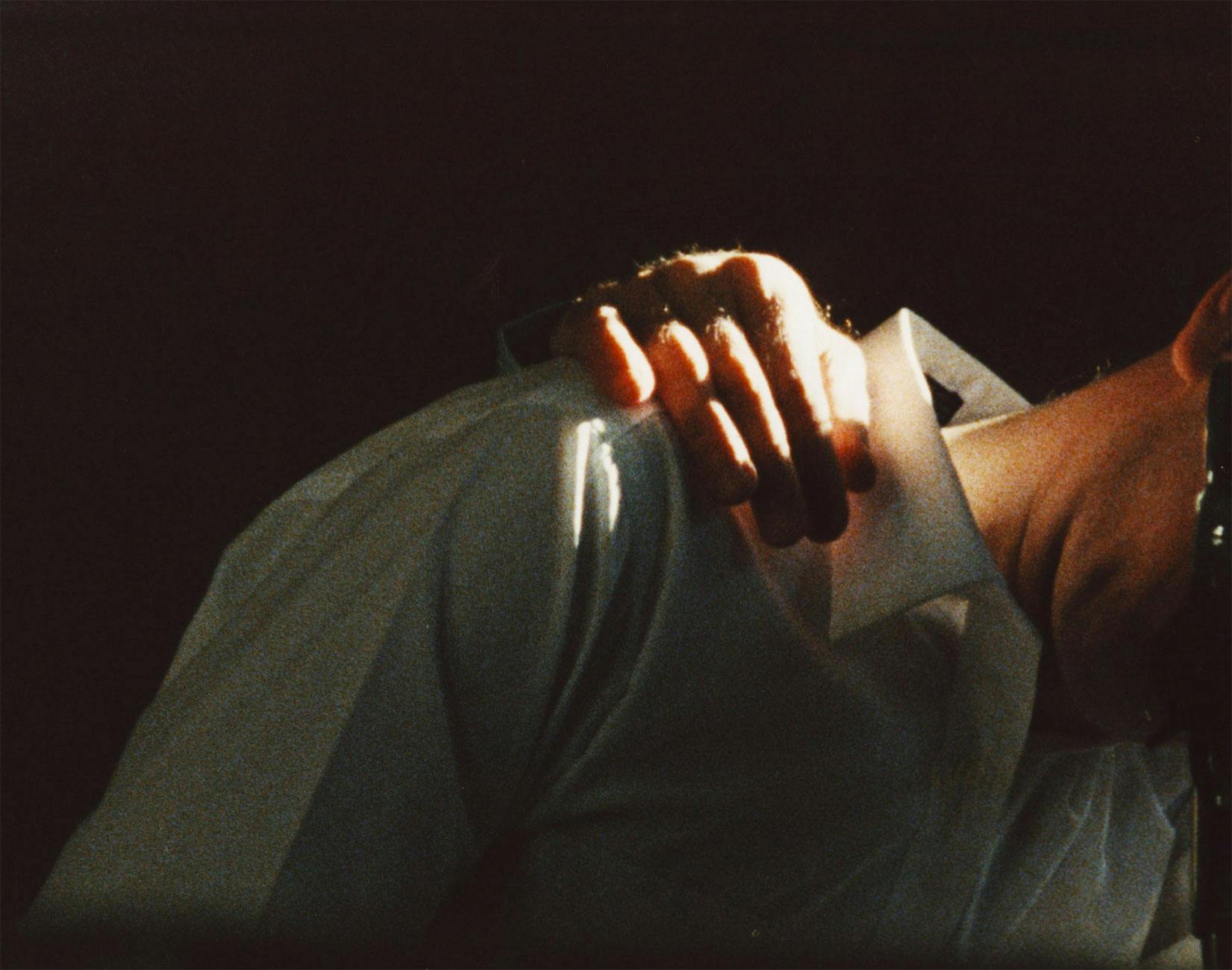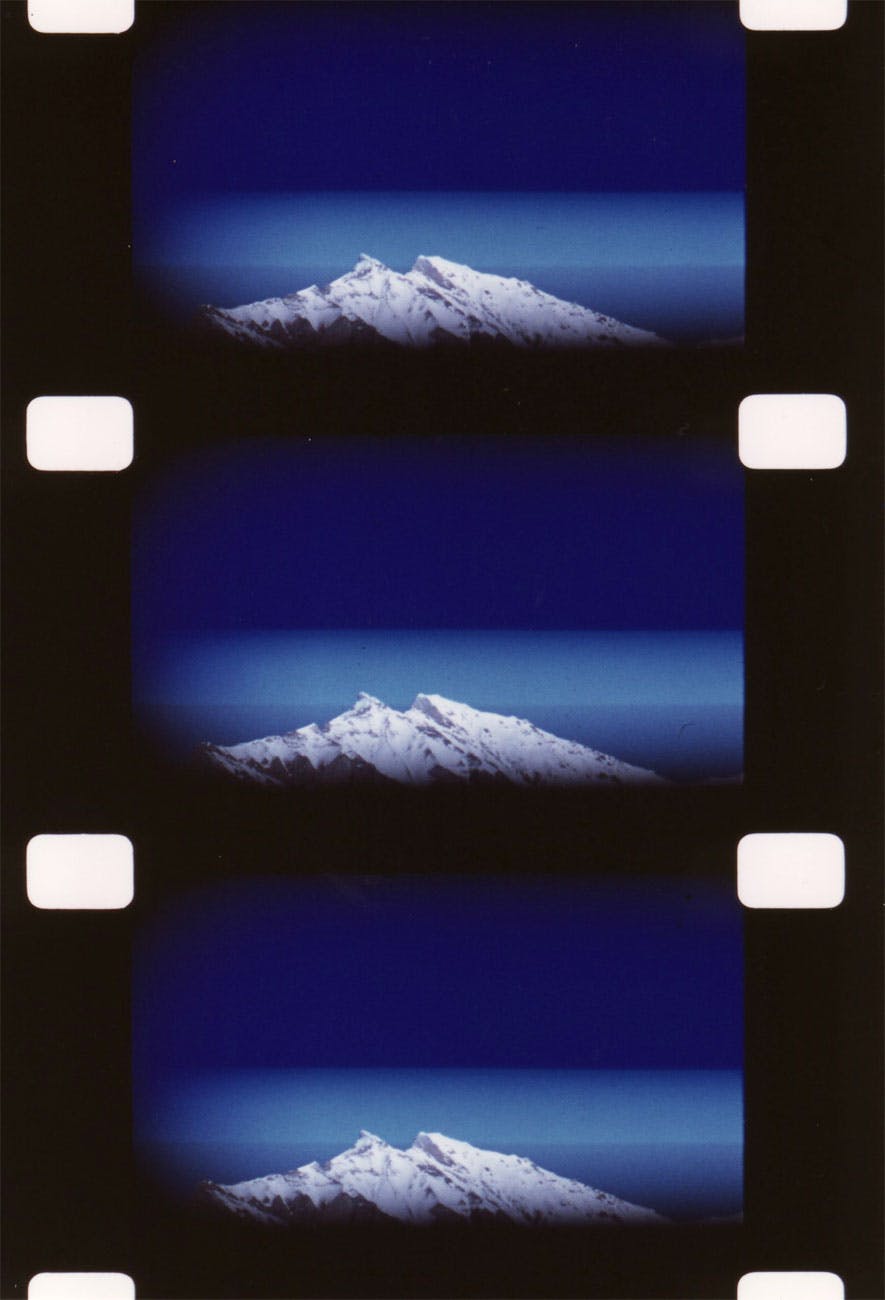artist showcase robert beavers
This year’s artist showcase is dedicated to Berlin-based US-American filmmaker Robert Beavers, who will present a cross-section of his work within three programs. Beavers has been making films on 16mm, shot with the Bolex-camera, for over 50 years. His work, dense and yet at the same time characterized by expressive, intense clarity, is evidence of a relentless, devoted work with and on the medium of film that seeks its own singular form in each individual film project:
His meticulously crafted films are at once lyrical and rigorous, sensual and complex. They respond to the landscapes, architecture and traditions of the Mediterranean and Alpine locations where they were shot and, on the other hand, incorporate very personal themes and questions of art. (Mark Weber)
Born in 1949 in Brookline, Massachusetts, with an early interest in film, Beavers moved to New York in 1965 and got in touch with protagonists of the New American Cinema, whose independence and freedom marked him deeply. There he also met his long-term companion Gregory J. Markopolous, with whom he left the US in 1967 and emigrated to Europe. Together they lived in Greece, but then also in Belgium, Germany, England and Switzerland, always traveling, also depending on where opportunities arose to realize their films. Beavers' early films, such as Early Monthly Segments (1968-70/2000), Diminished Frame (1970/2001) or Still Light (1970/2001), were made in this context and will be shown in one program.
Beaver's early work is a marvel of form; its complex splendor transmutes hearing and seeing into a higher and heightened way of hearing and seeing. Underlying all the artfulness of the films, however, is a dual. Beavers shows the tools of film, the material, the means - both technical (lens, filter, mask, tripod, celluloid) and non-technical (human eye, ear and hand). And shows how film uses them to color, shape, move, animate, interpret, transform everything it takes into its gaze. The cinematic apparatus: a miracle machine. And the films: the most refined patterns of converted, that is to say rethought, that is to say reshaped, filmed-(as-to-be)-seen world. (Harry Tomicek)
A second program will feature films from the 1970s and 80s that examine and reflect on the craft of filmmaking with other forms of (manual) labor and cultural practices: Work done, The Painting, AMOR, and The Hedge Theatre. The continuous (re)working of earlier films is also an expression of an impressive working through of the specific modes of filmmaking, not only during the making of the respective films. For example, Beavers worked on a cycle of 17 films entitled My Hand Outstretched to the Winged Distance and Sightless Measure, which comprises films from 1967 to 2002, often re-edited his films, and re-recorded some of the soundtracks.
In the 1970s and 80s, Beavers and Markopoulos lived and worked in relative seclusion, and there were hardly any public screenings of their films, a situation that did not change until the late 90s. The Swiss-based Temenos Archive was created in that period, where they independently preserved their films, a work that Beavers continues to this day, especially after Markopoulos' death in 1992. Since then, the re-editing, restoration of earlier films and estate work have combined in a complex simultaneity with new film projects that often deliberately return to old locations.
A third program, which will be the first screening of the showcase on Friday evening, features five recent films, including his latest The Sparrow Dream (2022), Pitcher of Colored Light (2000-2007), The Suppliant (2010), Among the Eucalyptuses (2017), and "Der Klang, die Welt..." (2018), which were shot in various important places in Beavers' life: his mother's house in Massachusetts, New York, Greece, Zumikon (Switzerland), and Berlin, where he lives with filmmaker Ute Aurand since 2011.
All three of Robert Beavers' programs will be screened at the DFF – Deutsches Filmmuseum und Filminstitut, where we already had the pleasure to be guests last year – many thanks to Natascha Gikas for the hospitality. We are especially pleased that Robert Beavers will be present at all screenings of the artist showcase to introduce the programs and talk to the audience.
fri 08/09 20:30 | robert beavers – pt 1: to recollect and foretell (screening at dff)
In Pitcher of Colored Light Beavers filmed his mother’s house and her garden. "The shadows play an essential part in the mixture of loneliness and peace that exists here. The seasons move from the garden into the house, projecting rich diagonals in the early morning or late afternoon. Each shadow is a subtle balance of stillness and movement and shows the vital instability of space. Its special quality opens a passage to the subjective. A voice within the film speaks to memory. The walls are screens through which I pass to the inhabited privacy. We experience a place through the perspective of where we come from and hear another’s voice through our own acoustic. The sense of place is never separate from the moment." (R.B.)
The Suppliant "is an exquisitely wrought, five-minute portrait, both of the small statue of the title and of the artist/friend in whose apartment it resides. Its arms raised in appeal to an absent being – perhaps a deity, or, as the shot of the figure seen from the back implies, the radiant sun that blazes through the windows – the figure is crosscut with an unmade bed, an anatomical drawing, a painting of a male nude, and views of Lower Manhattan seen from a nearby Brooklyn promenade. Beavers pans briskly up and down the figure’s sleek surface, as if to summon its spiritual, nurturing power, cutting these moves with shots of its head, its torso, and an arm gracefully poised. Sounds are minimal and precise: A gentle scratching suggests the friend at work, perhaps shading in a pencil sketch. Without a single shot of the apartment’s occupant, images and sounds carve a portrait of a solitary life comforted by art." (Tony Pipolo, Artforum)
In Among the Eucalyptuses Beavers films a "late afternoon quiet and a silent figure seated on a bench in Nafplion; the historic figures of Kolokotronis and Kapodistrias; plus the old factories and machinery, warehouses and train lines that are part of a Piraeus, now disappearing." (R.B.)
“Der Klang, die Welt…” was intended as a gift to Beavers’ landlady Cécile Staehelin, after her husband Dieter Staehelin had died. "Dieter is speaking in the film about the place of music in his life, while we see him and Cécile performing an ‘Arabesque’ by Bohuslav Martinů. She once mentioned the wish for her life to end like the last notes in this piece of music." (R.B.)
The starting point of The Sparrow Dream "was a question about how the places where I have lived have influenced how I see. I returned to one or two locations in Berlin that I had filmed for Diminished Frame in 1970. One was the milestone opposite Schloss Charlottenburg. In 1970, the milestone stood as a somber sphere topped by a Prussian spike, filmed in black and white; now I see it as a golden globe surrounded by regenerated leaves with a view to Fortuna. I also found the statue that I had filmed in Brooklyn in 2002 standing in Leopoldplatz, Wedding. Filming in Berlin and Massachusetts: The turning pages of a child‘s version of The Odyssey and the site of a Korean War monument in my hometown, Weymouth, suggest different sides of the same subject: Nostos* or homecoming. The vision of Greece, first awakened in my childhood, remains a source. Despite different histories, one culture reflects another: ‚Why have I returned to film these places, which I left so many years ago?‘ ’For the deeper view it gives now.’" (R.B.)
*nostos: "return, homecoming; song about homecoming; return to light and life"
The word nostos is derived from the Indo-European root *nes-, "return to light and life"; from Indo-European languages other than Greek, we see that this root occurs in myths having to do with Morning Star / Evening Star. The morning star "that heralds the approach of dawn" which shines as Odysseus comes back to Ithaca indicates that Odysseus is returning from the dead as well as from his journey.
In the presence of Robert Beavers.
Pitcher of Colored Light
D: Robert Beavers, 16mm, color, sound, 23 min, 2000-2007
The Suppliant
D: Robert Beavers, 16mm, color, sound, 5 min, 2010
Among the Eucalyptuses
D: Robert Beavers, 16mm, color, silent, 4 min, 2017
“Der Klang, die Welt…”
D: Robert Beavers, 16mm, color, sound, 4,5 min, 2018
The Sparrow Dream
D: Robert Beavers, 16mm, color, sound, 29 min, 2022


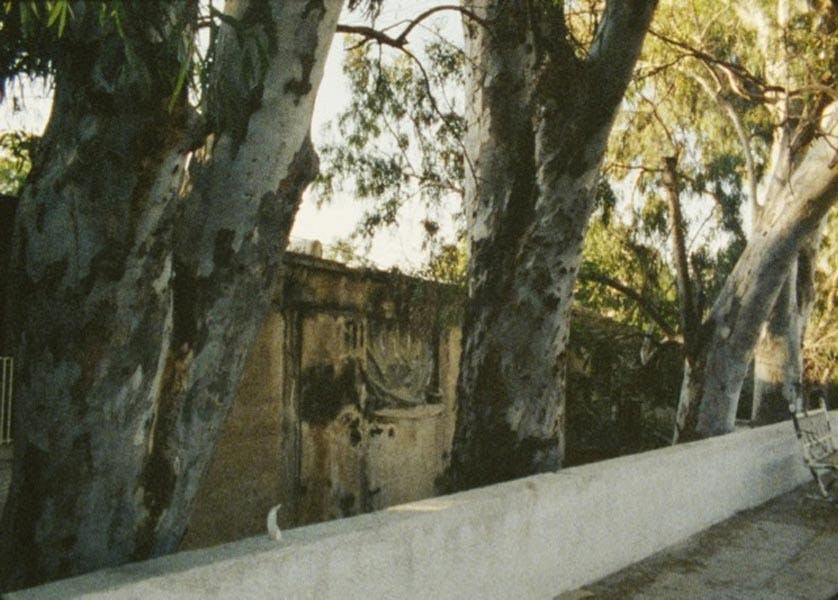
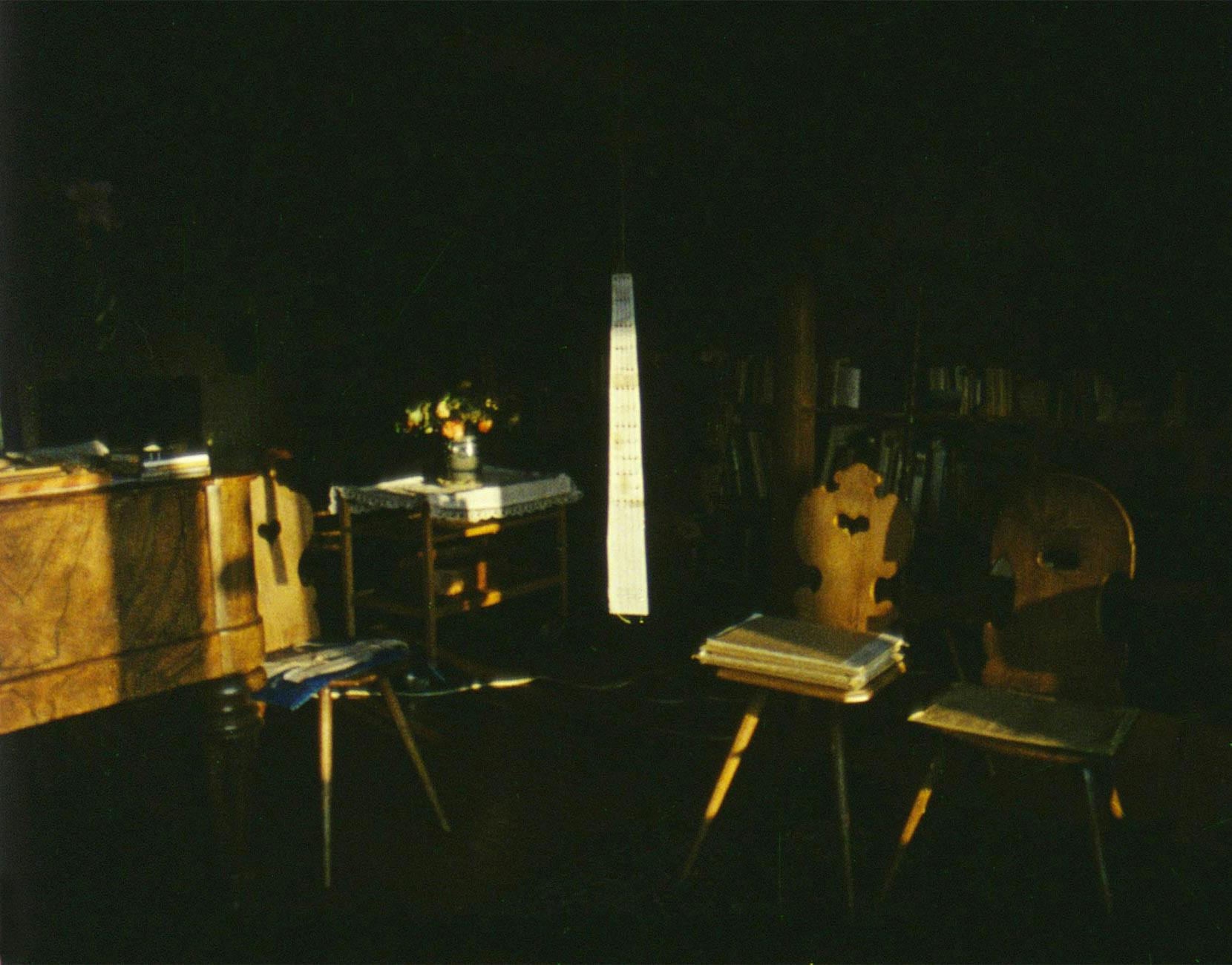
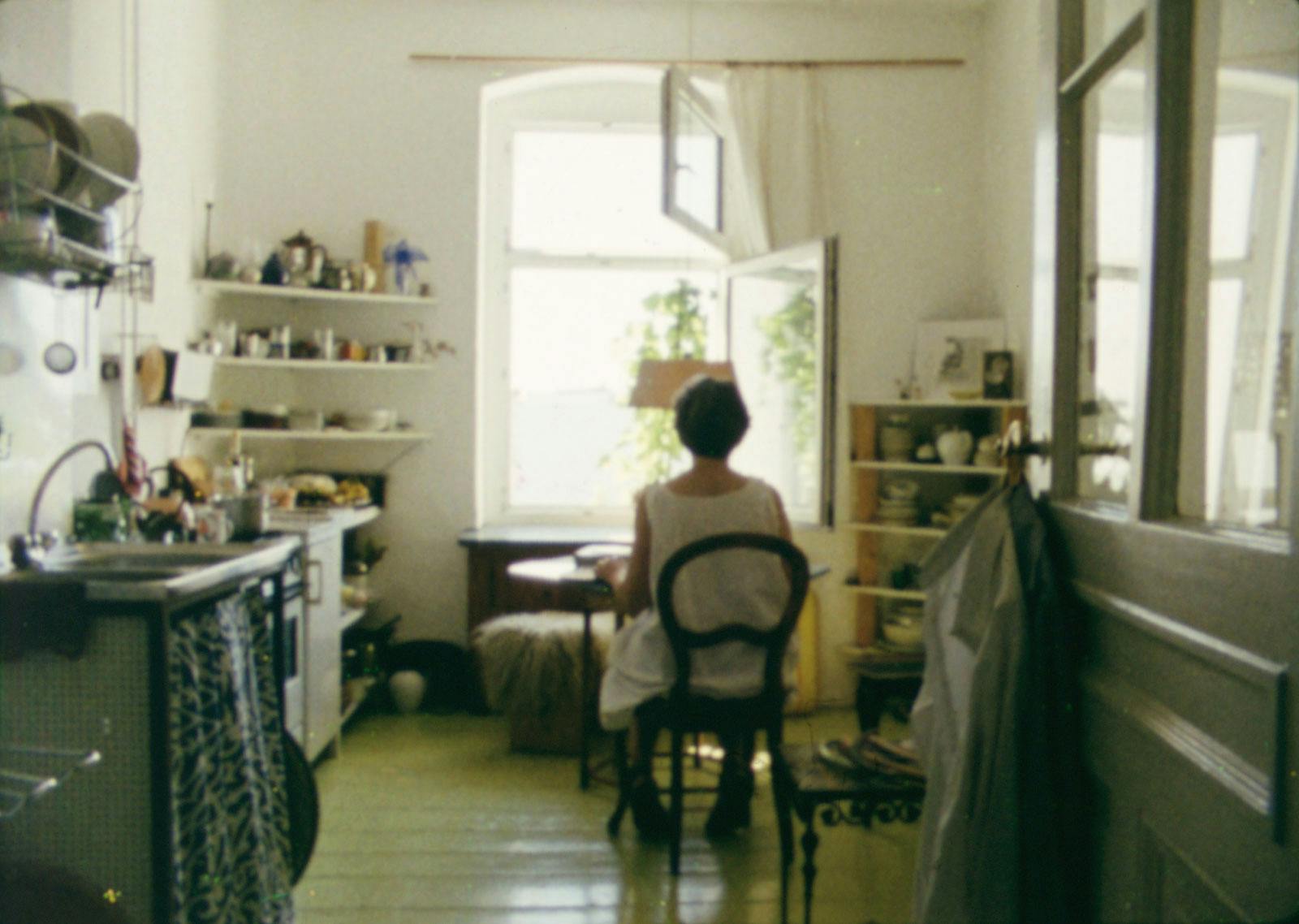
sat 09/09 12:00 | robert beavers – pt 2: my hand outstretched... (screening at dff)
Early Monthly Segments, filmed when Beavers was 18 and 19 years old, now forms the opening to his film cycle, My Hand Outstretched to the Winged Distance and Sightless Measure. "It is a highly stylized work of self-portraiture, depicting filmmaker and companion Gregory J. Markopoulos in their Swiss apartment. The film functions as a diary, capturing aspects of home life with precise attention to detail, documenting the familiar with great love and transforming objects and ordinary personal effects into a highly charged work of homoeroticism." (Susan Oxtoby, Toronto International Film Festival)
"There is a balance in Diminished Frame between a sense of the past seen in the views of West Berlin, filmed in black& white and a sense of the present in which I filmed myself showing how the color is created by placing filters in the camera’s aperture. It is the space of the city and of the filmmaker. I searched for signs of war’s aftermath and a few moments of daily life." (R.B.)
The first half of the film Still Light explores "delicate nuances of lighting, color and depth as Beavers shoots the face of a young man in various locales on the Greek island of Hydra, using a variety of customized masks and filters. The man’s face remains constant throughout, surrounded by iconic elements in the landscape, like a pulsating Renaissance portrait. Still Light brings to mind any number of structuralist binarisms: youth and age, creation and criticism, action and reflection, living landscape and mummified text." (Ed Halter, New York Press)
In the presence of Robert Beavers.
Early Monthly Segments
D: Robert Beavers, 16mm, color, silent, 33 min, 1968-70/2002
Diminished Frame
D: Robert Beavers, 16mm, b&w and color, sound, 24 min, 1970/2001
Still Light
D: Robert Beavers, 16mm, color, sound, 25 min, 1970/2001


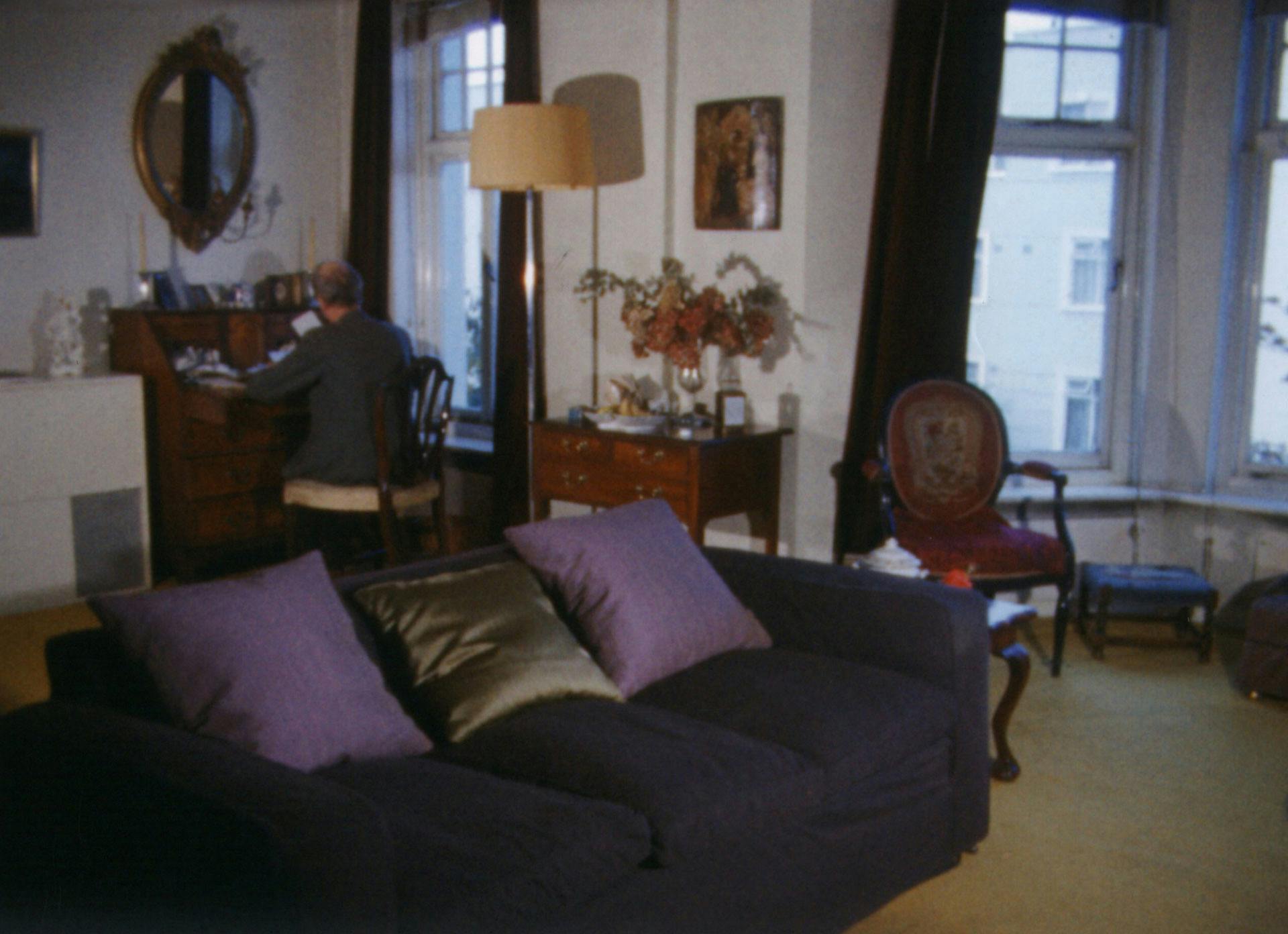
sun 10/09 12:00 | robert beavers – pt 3: the metaphor of hand and work (screening at dff)
"With the completion of From the Notebook of… (1971) my thinking shifted more towards what we share as human beings. This was visible in the way that I prepared Work done (1972/99). I filmed simple man-made objects and acts. My first choice was a block of ice in a workshop, a bodega, near the via Tournabuoni in Florence. I let the ice dictate the order and length of shots and camera movements. The chain of associations that I drew out of the ice block developed the theme of 'work' as shared experience and became a metaphor for my own filmmaking. I searched for objects and sites in Florence and the Grisons that spoke to me with the same clarity as early Florentine or Siennese painting. It is curious how my choice of locations in the Grisons acted like a pendulum, bringing me back each time to a clearer sense of Florence and its deeply visual religion." (R.B.)
The Painting intercuts shots of traffic navigating the old-world remnants of downtown Bern, Switzerland, with details from a 15th-century altarpiece, The Martyrdom of St. Hippolytus. "The painting shows the calm, near-naked saint in a peaceful landscape, a frozen moment before four horses tear his body to pieces while an audience of soigné nobles look on; in the revised version, Beavers gives it a comparably rarefied psychodramatic jolt, juxtaposing shots of Gregory Markopoulos, bisected by shafts of light, with a torn photo of himself and the recurring image of a shattered windowpane." (J. Hoberman, The Village Voice)
Two distinct geographical points and the theme of work continues AMOR (1980). "Through close observations of a tailor's workshop and the process of cutting and sewing a suit, I moved back and forth between locations in Rome or Verona and the hedge theater in Salzburg. Turning the lens in front of the camera's aperture and showing my hand entering the film frame establishes the measure of architectural space and the metaphoric structure of the film. The power in the hand, searching for contours and making connections, creates its rhythm through repetition. I reached a freedom of association, combining the tailor's work, the façade renovations and the clipping of the hedge theater to suggest a creative force that holds it all together. An undercurrent of unconscious violence stems perhaps from psychological tension and isolation.
Years later, I returned again to Italy to film Francesco Borromini's architecture in Rome and a grove of trees (a roccolo) with empty birdcages on a hill near Brescia. I traveled between these points and again to the hedge theatre in Salzburg, this time in snow. In filming The Hedge Theatre (1986/2002), there is a step forward to a more song-like empathy and gentleness. I reflected upon filmmaking through an enthusiasm for Borromini's architecture and the metaphor of sewing, intertwined with my experiences of love, poverty, and exile. In hindsight I see a connection between the gesture of the beggar's raised arms in the painting of St. Martin now in the final part of The Hedge Theater and a similar gesture of the small Greek statue in The Suppliant (2010). My journey has been from the material sobriety of the objects in Work done through the labyrinth of AMOR to The Hedge Theatre with its messengers of mortality and question of eternity." (R.B.)
In the presence of Robert Beavers, with Q&A after the films.
Work done
D: Robert Beavers, 35mm from 16mm, color, sound, 22 min, 1972/1999
The Painting
D: Robert Beavers, 35mm from 16mm, color, sound, 13 min, 1972/1999
AMOR
D: Robert Beavers, 35mm from 16mm, color, sound, 15 min, 1980
The Hedge Theatre
D: Robert Beavers, 35mm from 16mm, color, sound, 19 min, 1986-90/2002

